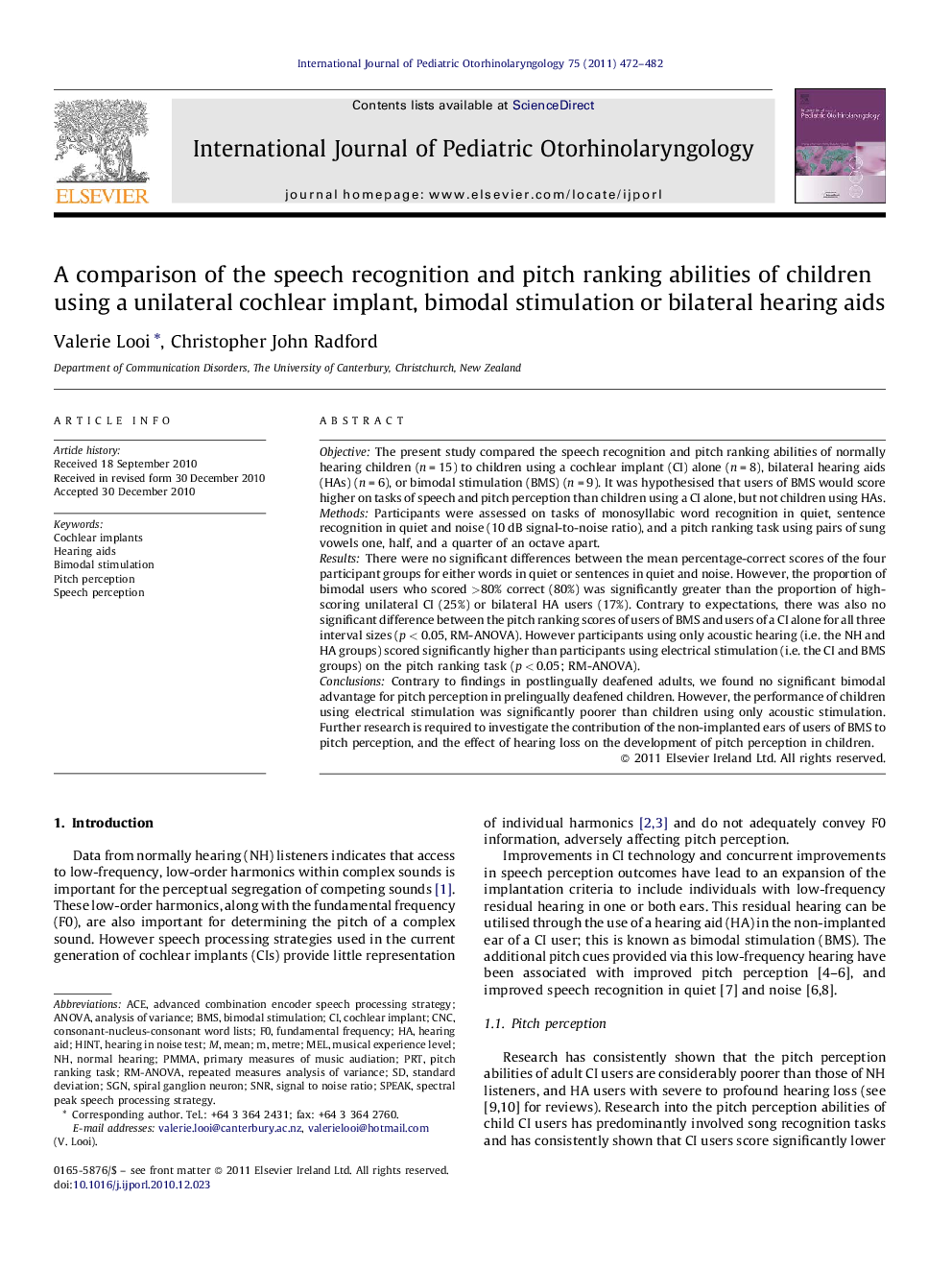| کد مقاله | کد نشریه | سال انتشار | مقاله انگلیسی | نسخه تمام متن |
|---|---|---|---|---|
| 6214041 | 1606046 | 2011 | 11 صفحه PDF | دانلود رایگان |

ObjectiveThe present study compared the speech recognition and pitch ranking abilities of normally hearing children (n = 15) to children using a cochlear implant (CI) alone (n = 8), bilateral hearing aids (HAs) (n = 6), or bimodal stimulation (BMS) (n = 9). It was hypothesised that users of BMS would score higher on tasks of speech and pitch perception than children using a CI alone, but not children using HAs.MethodsParticipants were assessed on tasks of monosyllabic word recognition in quiet, sentence recognition in quiet and noise (10 dB signal-to-noise ratio), and a pitch ranking task using pairs of sung vowels one, half, and a quarter of an octave apart.ResultsThere were no significant differences between the mean percentage-correct scores of the four participant groups for either words in quiet or sentences in quiet and noise. However, the proportion of bimodal users who scored >80% correct (80%) was significantly greater than the proportion of high-scoring unilateral CI (25%) or bilateral HA users (17%). Contrary to expectations, there was also no significant difference between the pitch ranking scores of users of BMS and users of a CI alone for all three interval sizes (p < 0.05, RM-ANOVA). However participants using only acoustic hearing (i.e. the NH and HA groups) scored significantly higher than participants using electrical stimulation (i.e. the CI and BMS groups) on the pitch ranking task (p < 0.05; RM-ANOVA).ConclusionsContrary to findings in postlingually deafened adults, we found no significant bimodal advantage for pitch perception in prelingually deafened children. However, the performance of children using electrical stimulation was significantly poorer than children using only acoustic stimulation. Further research is required to investigate the contribution of the non-implanted ears of users of BMS to pitch perception, and the effect of hearing loss on the development of pitch perception in children.
Journal: International Journal of Pediatric Otorhinolaryngology - Volume 75, Issue 4, April 2011, Pages 472-482